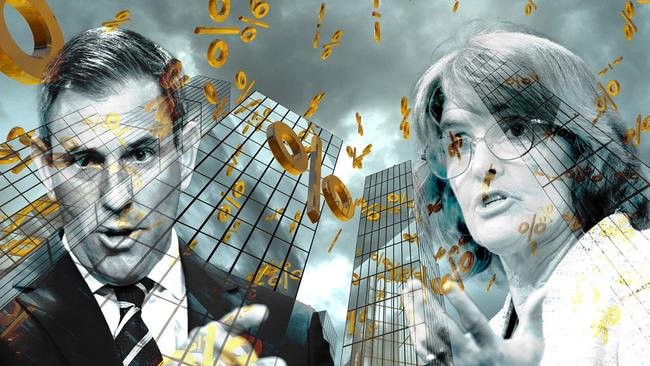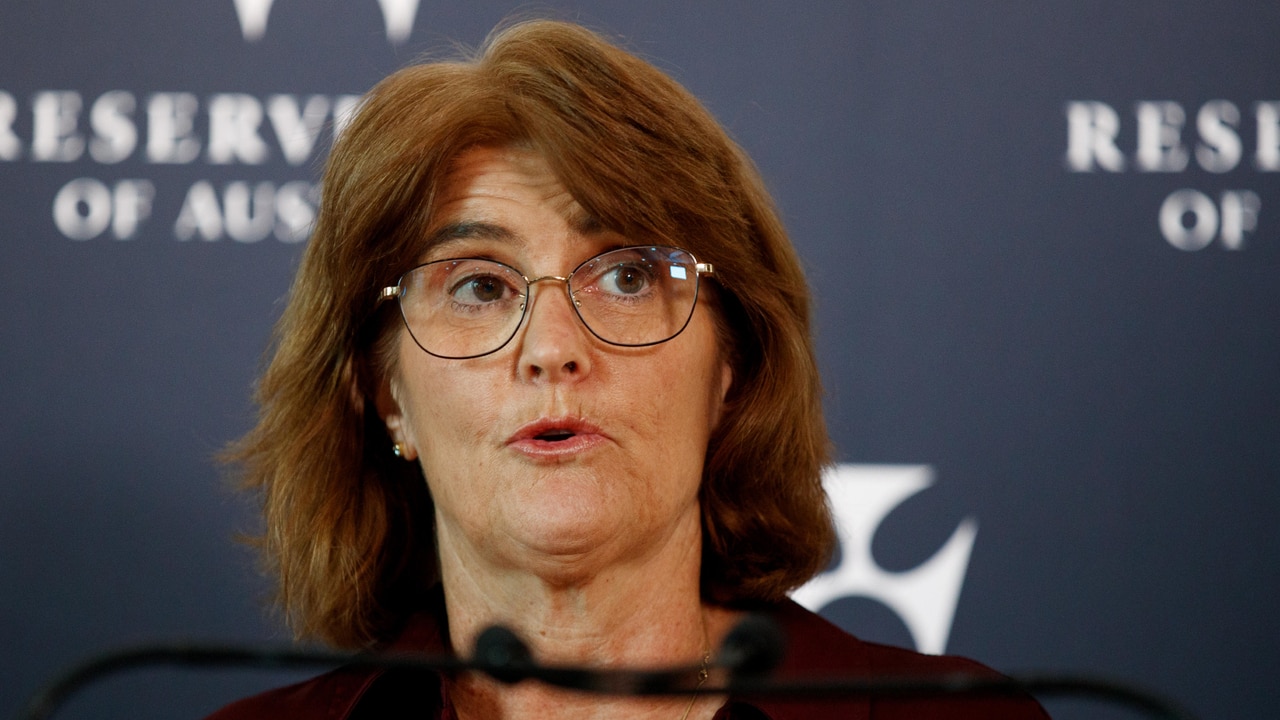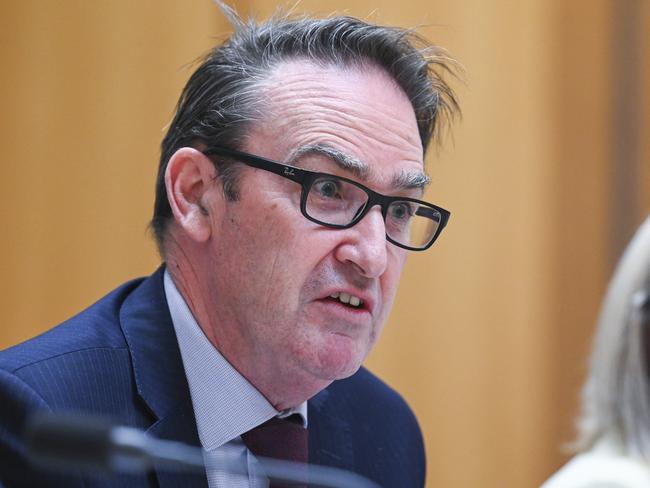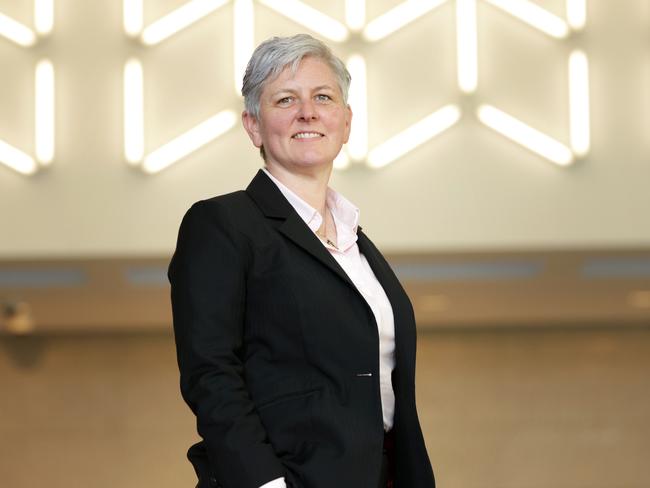There will be no going back to easy money
Don’t say you weren’t warned: borrowing rates won’t be falling to pre-crisis lows.

That rallying cry may not have worked for Kamala Harris against Donald Trump in the US presidential campaign but our country’s two most senior economic officials this week tried to clarify what monetary settings will look like when we return to normal programming. It may take some time to get there.
On Tuesday, the Reserve Bank board held official interest rates steady at 4.35 per cent, the level they’ve been at for 12 months. In her post-meeting press conference, RBA governor Michele Bullock said normal was not the crisis era’s free money, when the cash rate was slashed to 0.1 per cent.
That was a fleeting moment, when everything that could sensibly be done with a fistful of dollars – and then a few dollars more – hit an economy that had been put into deep sleep for its own good.
“It’s very important, but quite right, to make the point that they’re not going back to where they were in Covid, that was emergency settings,” Bullock said about the eventual rates downshift, which will come only when the board is confident that inflation is sustainably in the 2-3 per cent target band.

We have 2.8 per cent headline inflation, due to cheaper energy bills and rent assistance via attentive custodians on the march to an election. Underlying inflation at 3.5 per cent, second only to Britain’s among rich nations, remains above the RBA’s comfort zone.
Officials argue monetary policy is not as restrictive as in other nations – even as several peer central banks have been cutting their policy rates this year. On Friday, our time, the US Federal Reserve cut its benchmark rate by a quarter point, bringing it to a range between 4.5 per cent and 4.75 per cent. It was the Fed’s second easing after an initial move in September.
The RBA estimates that the “neutral cash rate” – which is a level that neither fires up nor cools down the economy – is about 3.5 per cent. So don’t bank on many reductions in the price of money.
The next day, Treasury secretary Steven Kennedy told a Senate committee that with unemployment rising and increased confidence that inflation would sustainably return to target, central banks in the US, Britain, New Zealand, Canada and the euro area had joined Sweden and Switzerland in cutting interest rates this year.

“While markets anticipate a further easing in monetary policy,” said Kennedy, who sits on the RBA board, “the level of long-term government bond yields across advanced economies suggests that interest rates are not expected to return to the low levels that prevailed before the onset of the Covid pandemic, including here in Australia.”
Decoding this for property hucksters and mortgage hard lucksters: rates won’t be falling to what was a golden era for borrowers and an excruciating time for savers. Remember, inflation was consistently sitting below the RBA’s target band as a number of secular changes after the global financial crisis, including a glut of cheap goods, labour and savings, remade world markets. Our officials cut rates to levels in 2019, for instance, that gave previous controllers heart palpitations. And then along came the coronavirus, followed by monstrous inflation.
Nations are trying to adjust to life after the interest-rate thrashing the International Monetary Fund calls the “great tightening”.
In many ways the reduction in inflation has come with far less pain, especially given unemployment has not increased as much as in previous “disinflationary” periods – although tell that to incumbents tossed out of office or humiliated in this torrid election year because of the unceasing assault on living standards.
Australian officials embarked on a deliberate, different, perhaps experimental, monetary path to other rich nations. Westpac’s chief economist Luci Ellis describes that rate strategy as “not quite as high for a bit longer”.

But while tolerating higher inflation for a time than elsewhere, the RBA has presided over an economy that has pumped out one million new jobs in 30 months, roughly the equivalent to the record migrant inflow.
In his Senate testimony, Kennedy described the likely trade-off had the RBA gone harder at inflation. Our unemployment rate is forecast to peak at 4.5 per cent. If the jobless rate were to climb to 5.4 per cent, as in New Zealand, we would add 130,000 people to the ranks of the unemployed. Side note: there are 720,000 Kiwis here on temporary visas, 50,000 more than in mid-2022.
Canberra’s wonks, however, argue the nation can rattle and hum a little more quickly than Sydney’s monetary druids believe. Kennedy said he was optimistic about holding on to “the gains that have been made in employment in a sustainable way”. Treasury estimates we can have a 4¼ per cent jobless rate without igniting inflation (or the “non-accelerating inflation rate of unemployment”); the RBA sees it as 4½ per cent. (NAIRU is used to gauge spare capacity or full employment.)
What comes next? A few months ago Bullock made it clear the first rate cut would not be this year. Economists and their financial market allies adjusted their calls for the initial rate reduction to the RBA’s first meeting in mid-February; then it slipped to May, when the next federal election is due. Little has changed in the RBA’s official forecasts across three months and the board is not for turning.
Bullock told reporters on Tuesday financial markets were “actually reasonably on message about what we’re saying here, which is that we are not at the moment in a position where we can sustainably say inflation is going to be back in the band”. As markets do, they then drifted a little further away in their pricing for a 0.25 percentage point cut to July.
In its quarterly update on the economic state of play, the RBA outlined how it misread the strength of government spending; politicians just kept running up the taxpayers’ tab. The Treasury secretary revealed state and territory governments had added another $20bn in spending for this financial year alone.
Again, this torrent of new money into a stretched economy keeps rates higher for longer. Bullock urged federal politicians to keep a lid on election promises. “I think that the government is well aware that inflation is the big thing here, and cost of living, and that’s what’s hurting people, and I expect they will be very conscious of it,” she told reporters.
The coming campaign could bring a fiscal auction between Anthony Albanese and Peter Dutton that could tilt either way. One Canberra source tells Inquirer the public could reward the team offering a more prudent approach to spending than a cash splash.
Given the dangers of reigniting inflation, both major parties may opt for the high road. OK, maybe not so far down the low path. More worrying is the threat of baking in junk policy, hurting us long term in creating perverse incentives. Neither side is immune from dopey interventions. Witness the Coalition’s promise to slash skilled migration or Labor’s impudent stage four tax cut to anyone with a higher education debt.
What is clear from the RBA’s quarterly update is it is now more worried about our dismal labour productivity, which is still only at 2016 levels. RBA economists argue stagnant productivity “weighs on the economy’s potential supply” and poses a risk of higher inflation, especially with our robust labour market. Many countries are facing the same threat, although notably not Joe Biden’s America, where productivity growth is spectacular.
One of the key risks to the outlook in the RBA’s judgment is productivity may not return to its long-run average – a key assumption in all forecasts from the official family of economic advice headed by Bullock and Kennedy – and that would slow our progress in beating inflation.
This column recently explained how one of the factors behind stalled productivity was the rapid rise in government-funded health and social care employment. As well, the economy has quickly absorbed many first-time workers, typically not as productive as experienced employees. Investment in tools, machines and data has not been able to keep up with the labour surge.
The RBA may have a dual mandate to deliver full employment and low inflation. Yet its performance is typically scored more heavily on the latter goal, especially during a cost-of-living crunch where few workers are losing their jobs.
Bullock talks tough about high inflation hurting everyone; the vigilance, too, is palpable. But the justification – that demand is running ahead of supply – has a limited shelf life, unlikely to withstand a searing summer of public expectation and partisan heat. The RBA will need a new storyline for its autumn season.
The backdrop to our federal election campaign will be voter anguish on cost of living, which is really about enduring bill shock for services they can’t avoid; the rate of inflation may dip but prices for rent, insurance, school fees and childcare keep flying high in the stratosphere.
What would allow people to feel as if they had a chance of getting ahead would be a policy contest that produced new ways to retool our growth engine to lift incomes. That is also the only way to sustain the tax base and not kill the aspiration of younger workers who will be paying for the social services for an ageing population.
If we miss this reform moment, it’s not necessarily the short road to ruin. But it leads to the narrow path of higher interest rates, more debt and weaker growth.
The easy-money and world-beating lifestyle that seemed predestined? We won’t be going back to that.







No one in charge of the national till is prepared to put a date on when Australia’s interest rate easing will begin, such was the ill-fated guidance during the Covid calamity. Still, the grown-ups in the official family have started massaging expectations of where rates will eventually settle: we are not going back.